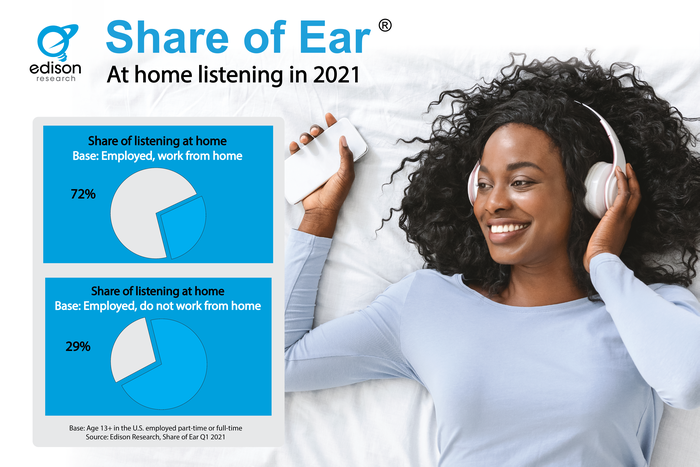It makes sense: when employment undergoes a tectonic shift from in-office to in-home (or WFH, a standard acronym for “work from home”), listening trends could change. But how much actually shifted during Covid?
Edison Research pinpointed that question in the company’s ongoing Share of Ear research project, a subscription service from which the company sometimes publicizes key results. The answer to this question is: 72%. That’s the amount of listening — to all kinds of audio delivered on all kinds of platforms — was consumed at home. That number applies to a base survey population of employed people working their jobs from home, in Q1 of this year.

“We followed up on the massive change we saw last year,” Edison Director of Research Laura Ivey told us, “where so much overall listening shifted to At-Home (70% of all audio in Q2 last year). We didn’t measure ‘work from home’ prior to a couple of surveys ago, and this new data allows us to quantify just how much of total audio gets consumed at home by those who work from home.” Ivey said Edison is interested in tracking Covid-induced changes, “to see which ones stick.”
Covid’s lifestyle changes caused shifts in what people listened to, and how they listened. The share of ear for podcasting (this is time spent, not downloads or audience size) jumped upward 26% in Q1, over the same quarter in 2020. That jump lifted podcasting to 5.4% of total ear share, up from 4.3% previously.
Perhaps unsurprisingly, smart speaker use for audio listening also rose, by more than 40%.
“The movement of so much listening to the home changed the shares of many platforms and devices,” said Ivey. “It will be fascinating to see how these numbers continue to develop as American life evolves during and, eventually, after this pandemic period ends.”
.
